A PRELUDE to INSIDE THE BATMAN: The STEVE ENGLEHART INTERVIEWS…
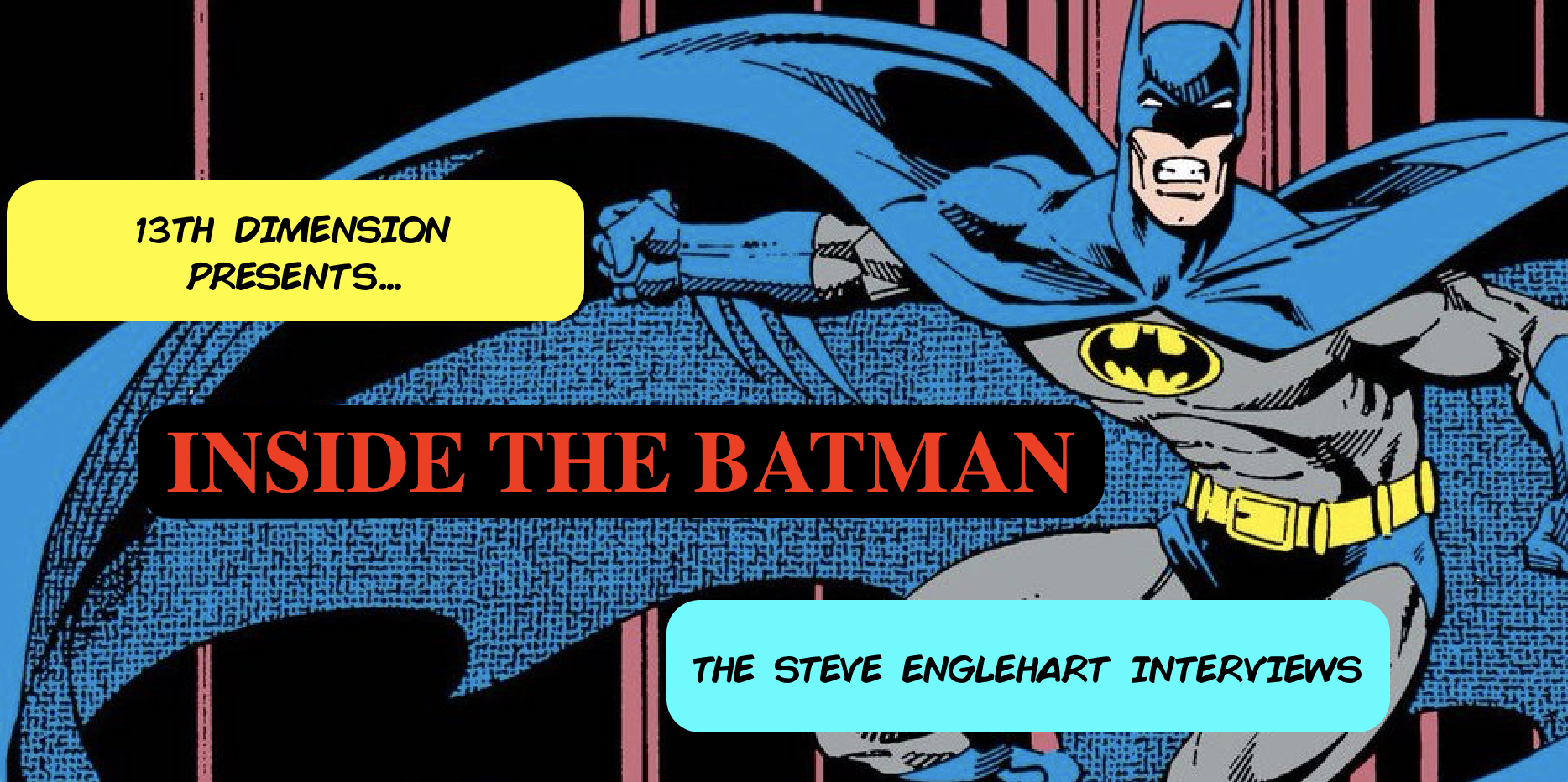
Welcome to INSIDE THE BATMAN: THE STEVE ENGLEHART INTERVIEWS, an issue-by-issue exploration of the greatest Batman story of all time — Steve Englehart and Marshall Rogers’ seminal late ’70s Detective Comics run.
The complete story has finally been collected for the first time in hardcover — and in the way Englehart envisioned it — in Tales of the Batman: Steve Englehart. With the book newly released, the time is perfect to go back and look at the story from every conceivable angle. Each weekend for the next couple of months, we’ll be diving into a single chapter of the 8-issue saga, with full commentary by Englehart himself — the most complete analysis of the landmark storyline ever published.
For the INDEX of individual entries, click here. But in the meantime, check out this PRELUDE — in which Englehart details how he landed the gig, what he set out to accomplish, what his overarching thoughts are on Batman and the Joker, the change in art teams, how he structured the story and more.
Dig this, Batfans. You’re in for a treat:

Dan Greenfield: Give us a brief recap of how you got the gig to begin with, and then what Batman research you did ahead of time.
Steve Englehart: Well, I quit Marvel over an editorial dispute. My wife had traveled in Europe before I knew her. I thought that sounded like a good idea, so we started making plans to go to Europe and then Jenette Kahn called. Jenette had just been appointed publisher over there, Carmine Infantino had been the publisher. Carmine was a decent publisher, I think, but he was maintaining DC’s level of… goodness. They were fine, but they weren’t going anywhere, and a lot of the DC stars — Neal Adams, Gil Kane, Bob Brown — people were leaving to go over to Marvel because they were having more fun at Marvel. So DC had sort of sunk into — not irrelevance because they still had their DC world going on — but Marvel had outstripped them pretty much. And so Jenette was brought in. I think she ran a children’s magazine before.
Dan: Dynamite magazine.
Steve: Right, and so she was asked to fix DC, and her solution was to go hire some of the people at Marvel who would make an impact, in her estimation, at DC. So she talked to me and she talked to John Buscema. John Buscema did not choose to go to DC.
I was on the outs with Marvel, so I said it would be very cool to write the Justice League and Batman and all the rest of that stuff, but I can only do it for a certain amount of time because I was going to go to Europe. I’d already started the process on that. She offered me the Justice League.
She wanted me to write Justice League because she wanted me to do to the JLA characters what I had done to the Avengers characters, which was give them personalities and have stories and all that stuff that DC didn’t do.
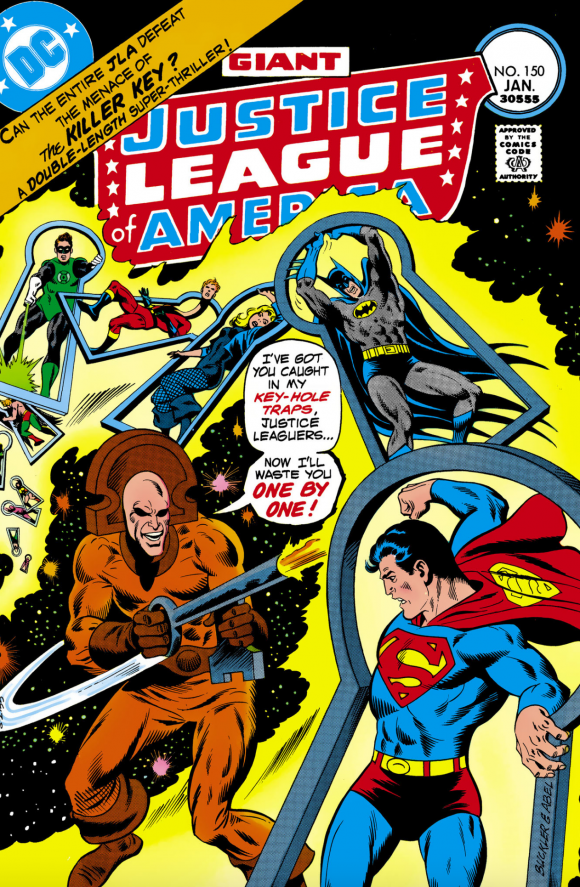
Rich Buckler pencils, Jack Abel inks
With JLA, I said I can’t do what you want in a regular 17 pages a month, I gotta have 34. She agreed to that, and fortunately that book was being done with Dick Dillin, who was, you know, he could do 34 pages a month if that’s what he was asked to do, you know? And I will say, I was very happy to work with Dick Dillin.
I like the guys who came before me and entertained me back in the day. I was told over the last 40 years that nobody cares about Dick Dillin and they weren’t going to republish that Justice League run because blah blah blah. But I really liked working with Dillin.
At that lunch in New York, I said, well, yeah I’ll do the Justice League. That would be fun for me to do, and I want to stick it to Marvel so I’m good with all that. But I want to do Batman himself, because Batman is the big character at DC that I really, really, really liked, and I wanted to take my shot at it. So she said OK.
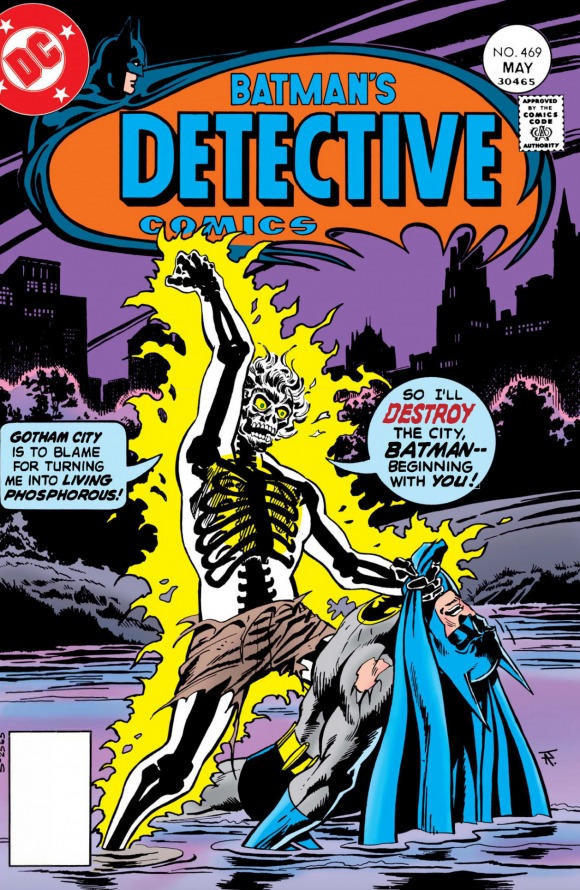
Jim Aparo
The thing there was Julie Schwartz was the editor of both those books, and Julie had a reputation for being a hands-on editor, as the guy who would co-plot everything and sit Gardner Fox down and they’d work out the story there and all that, which was not A) how I worked and B) how I figured we were going to — I mean I had to work the way I worked if I was going to do what it was she wanted me to do, so I was worried about that.
But Julie was sensible, and he was never, you know… I mean he was younger then than I am now, but he never sort of retreated into being, “This is the way that I did it in the ’30s and this is the way it’s gonna be.” So he went with it. I don’t know if there was any hard feelings or any of that kind of stuff. Certainly nothing was ever shown to me about it. Whether he liked that arrangement or not, he bought into that arrangement and let me do what I wanted to do.
So, we get to Batman, and the things that I wanted to do with Batman. Well, I wanted to do the definitive Batman. Now that it’s all done and it’s been labeled that, blah blah blah, it’s like, oh yeah, sure. But I mean I wanted to do just the Batman that was like everything that I thought Batman should be, my definition at least.
There were several moving factors there. I mean I’m supposed to make him a person. On the person side — and both these things were kind of simultaneous, it wasn’t like I thought of one and then I thought of the other — but on the person side, I had always been annoyed, even as a kid, when Lois Lane or Lana Lang or somebody would cozy up to Superman and Superman would go “Gosh! You know, I really have no idea what to do with an actual woman at this point!” I thought, that’s not how adults operate! I mean even as a kid I said, that’s ridiculous.
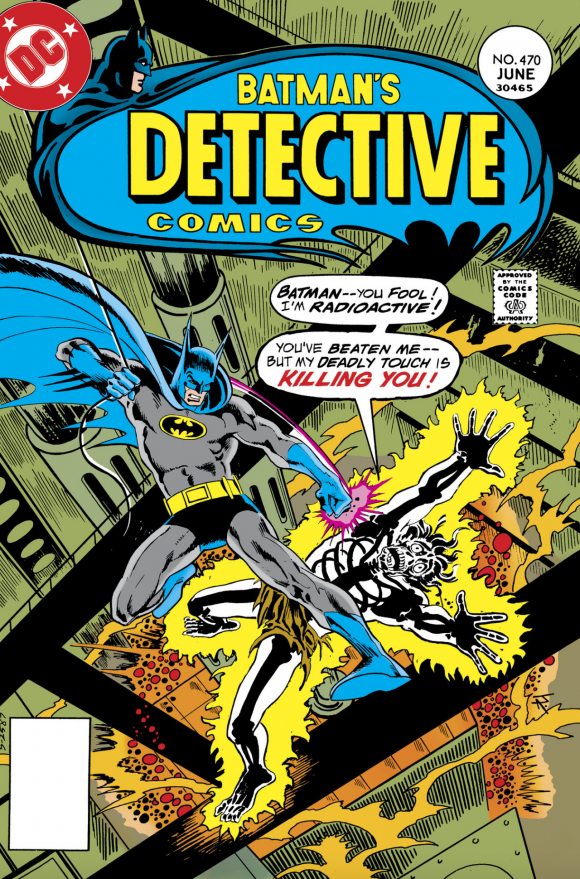
Jim Aparo
It seemed just lame that they were so pure. So, if Bruce Wayne is a millionaire playboy running a millionaire’s enterprise, etc., he would have hot girlfriends, and he would have a sex life. And that was the big breakthrough for me in that nobody had a sex life in those days because there was the Comics Code Authority and you couldn’t. So people didn’t even think about going down that route, and it was one of those things where I said, “Well I think I’d like to go down that route.” And it’s under the code, you know, we’re not going to see her naked, but I definitely indicated in the oblique way that you had to do in those days, that they were having a sex life.
Now Bruce Wayne becomes more of a fully rounded person. He was an adult. Then that led to the movies and all the rest of that stuff. But it all started with the idea that he had to be an actual human being and not one of the plaster statues that DC characters mostly, if not all, were. I hesitate to say all because that was a long time ago, who knows, but in the Justice League they were all just statues.
So, Bruce Wayne: Who is he? Why is he wearing this mask? Who is he outside the mask? All those things I wanted to look at. The other thing though, was the Batman side. I just wrote an introduction for the Joker’s 80th anniversary hardcover book that they’re putting out, and I was asked to explain the history of the Joker.
I did, and I can tell you now even better than I could have before I did that: For the first two years, the Joker was a scary homicidal maniac. They’ve republished some of those stories every once in a while, in the back of double-sized issues and so forth. They were cool, and I really liked the darkness of them, the primitive art, all the black on the pages, all the ink, everything that made Batman’s world so dark and weird in his early days.
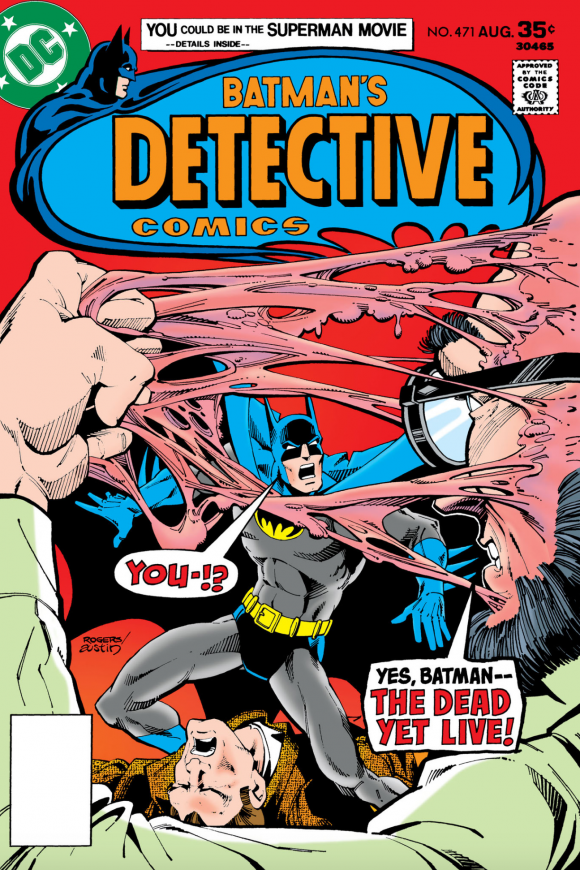
Marshall Rogers pencils, Terry Austin inks
So the Joker had two years of being a serial killer, and he was literally a serial killer. … Then the Joker became family friendly. And so for the next 30-something years, all the time I was a kid reading it, the Joker was the funny clown. I mean he had a clown’s face and he did things but it wasn’t… I don’t think there was anything particularly Jokeresque.
Again, that’s a long period to say nothing happened, but during that period there was The Man Behind the Red Hood! and there was Dick Sprang drawing Batman. As a kid I got to read Dick Sprang’s Batman, which was cool. But there was nothing Jokeresque about the Joker for a very long time and then I changed that. That was the other thing that I wanted to do, was to bring back that whole ’40s pulp stuff.
Dan: What did you think of what Neal Adams and Denny O’Neil had done a few years earlier with the Joker, making him a killer again?
I looked at it again because of this, and it was an excellent Adams-O’Neil story, but the Joker, he was more dangerous but he was not crazy. The plot involved pollution — I mean it was a mid-’70s Denny O’Neil story, right? It wasn’t a 1940s pulp thing.

Neal Adams
I get asked that a lot, “Well, O’Neil and Adams did that,” and they did! But again I can speak to this now with more knowledge than I had, everybody said, “Well, that’s nice.” And then it changed nothing… the Joker ended up getting his own comic-book series where he was the nice villain who fought even worse villains, and you know. It was like… it didn’t change anything. If The Joker’s Five-Way Revenge! had had bigger impact and changed things, then yeah, but it was just a 1970s Batman story by O’Neil and Adams, which were usually pretty cool, and it was in its own way, but it didn’t have this whole pulp atmosphere that I wanted. I wanted the darkness and pulp.
So you get a scary Joker back to being a homicidal maniac, always in the middle of the night, down a dark alley. Do the same thing to a lesser extent with the Penguin. And then the third factor was Boss Thorne, who I’m pretty sure there have been stories about Batman vs. the government of Gotham City.
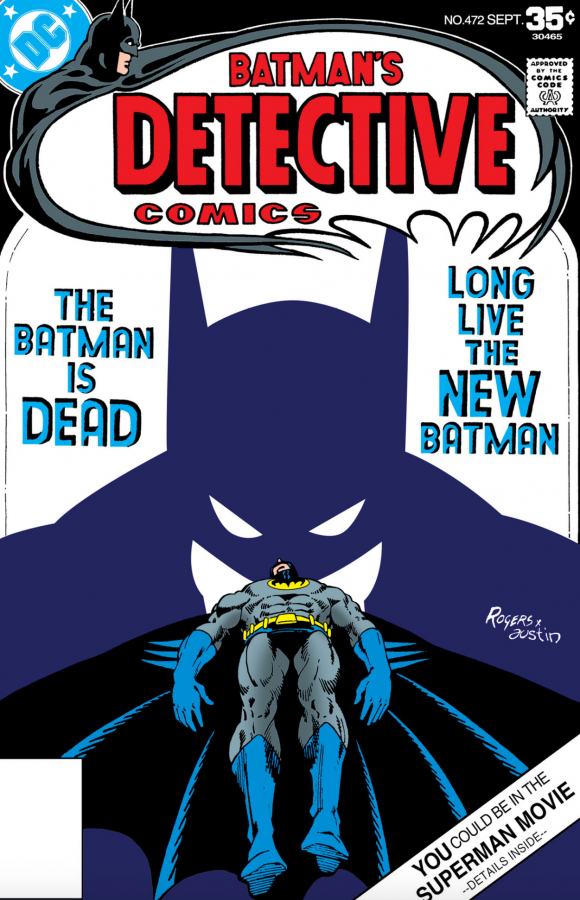
Marshall Rogers pencils, Terry Austin inks
Dan: Before we move on to Thorne and some of the particulars, in terms of your process, there are some things I’m curious about. Because you’ve told me before and I know this is part of the history but you wrote the script without having an artist collaborating. You actually finished the story before it even got to the artist. Is that correct?
Steve: Well not entirely, no. In the beginning, Julie assigned Walt Simonson and Al Milgrom. And I was good with that. Walt was a big Batman fan, and right after we got this assignment, I was in New York probably for that same trip when I had lunch with Jenette, and Walt was from Baltimore and I had grandparents in D.C. So we got on the Metroliner and rode south and for a couple hours we just sat there on the train and Walt and I were talking Batman and it was like he was my partner and here we go and here’s what we’re going to do and all this kind of stuff. So he was, you know, totally in on it.
The problem as it turned out was Walt was only doing layouts. I assume that was all he had time to do. And Milgrom — with whom I really, really, really liked working with on Captain Marvel and West Coast Avengers – his style is kind of cartoony. That works for the West Coast Avengers. It didn’t really work for Batman.
So I didn’t get the detail of pencils that I would have liked, and the detail of inking that I would have liked. On the other hand, that’s the way comics got done. I did not go to anybody and say, “I need a different artist.” It’s like OK, well this is going to be done this way, and that’s how it’s going to work.
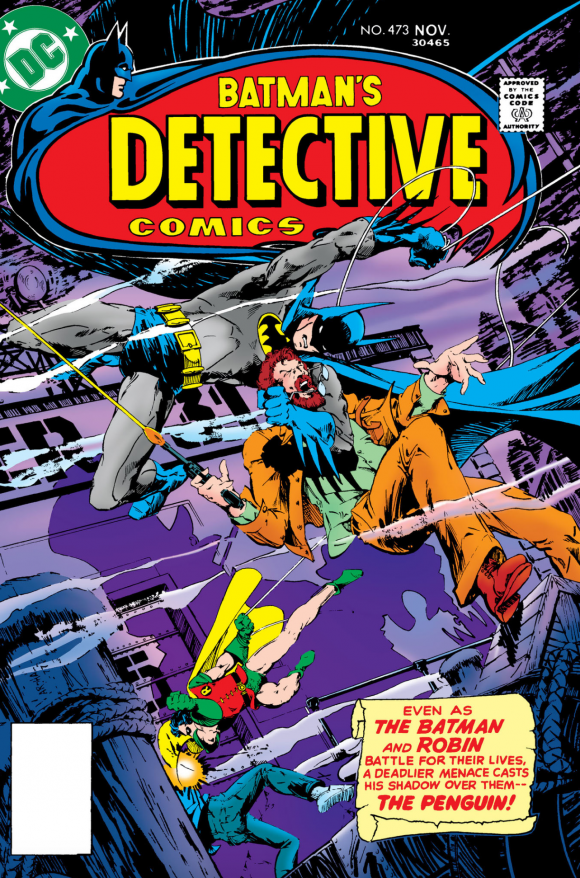
Marshall Rogers
The first couple of issues, the Simonson issues, were certainly done Marvel style. The people who read this website may or may not be aware of Alan Moore’s scripts, but Alan Moore’s scripts look like phone books, right? Alan Moore describes everything in every panel. I tell the artist everything I think they need to know, and then I want them to be as creative as they can be on that.
I mean if it’s important that the guy I’m talking to is wearing a yellow t-shirt, then I’ll say that. If it’s not, then I don’t care, you know. It’s fine, if it’s not important to me, it’s not important to me. Because I started out as an artist, I would like artists to have as much freedom as possible. I still think that Marvel style is better than full script.
So Walt gave me everything I asked for, but it wasn’t the style that I was really hoping for. I think even after the first two issues, things were lagging a little bit. It was sort of Walt’s side gig and Milgrom’s, I don’t know, but things were going sort of slowly doing it Marvel style because I would say, “here’s the plot,” and then I’d have to wait for the art to come back before I could write it. And that was going slowly, and I had a deadline (to leave for Europe).
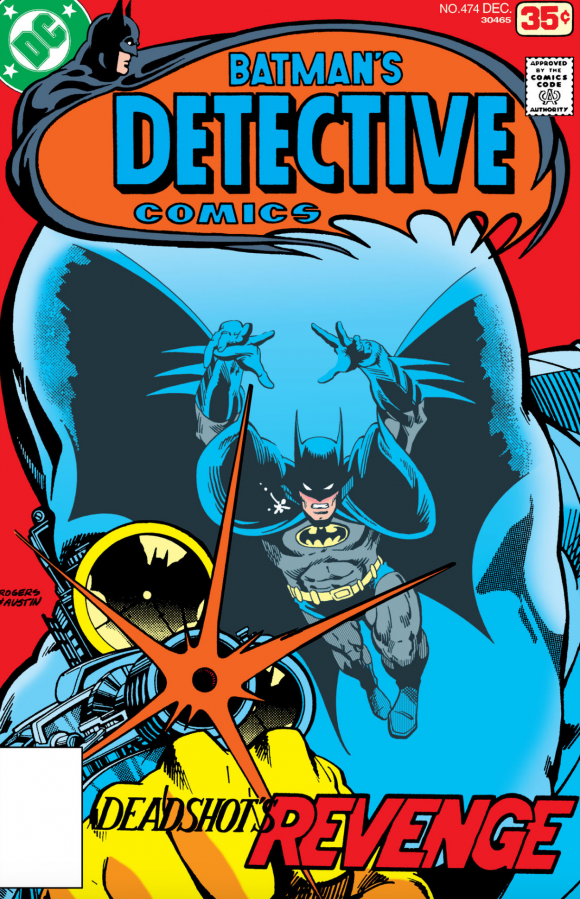
Marshall Rogers pencils, Terry Austin inks
It was still a number of months off at that point, but it was beginning to be a problem. I’m sure that I probably said to Julie, “I’m going to have to start writing these things, the scripts in advance or else I’m not going to get it done. If I have to wait, I can’t control that and I only have a certain amount of time. I don’t remember having that conversation but I’m sure I must have.
The next thing I knew, somebody else was going to draw these books. Julie made that decision. Then came Marshall Rogers and we’ll get to that I guess when we get there.
Dan: Across the eight issues, did you have this all planned out, where you knew exactly where you were going to end when you started? Because you have so many different threads that play off each other as the story moves forward, you’ve got multiple storylines that tie in. Some of them end, some of them begin in the middle. There’s a lot of overlap. How much outlining and plotting did you actually do when you were crafting the story?
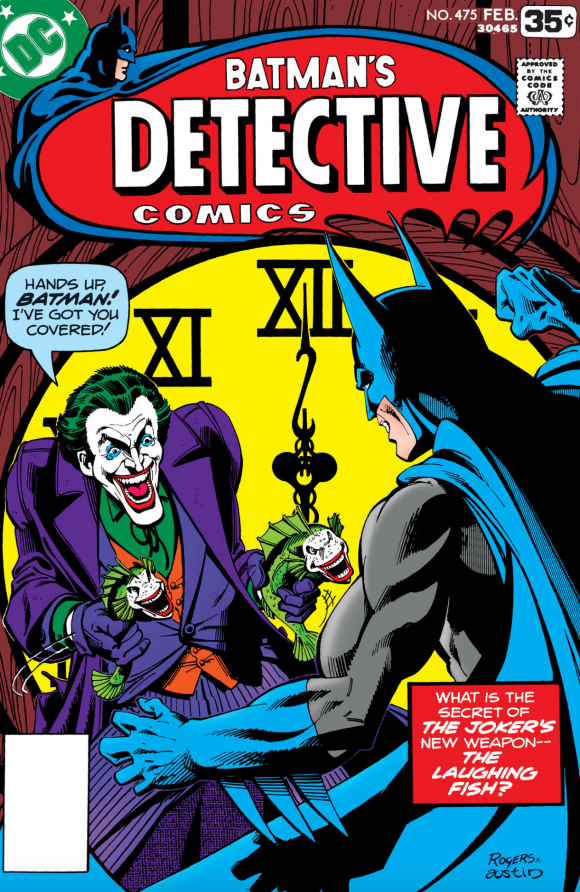
Marshall Rogers pencils, Terry Austin inks
Steve: Well, the way I did stuff, and still do for that matter, is I’ll come up with a beginning for all the characters that I’m planning to write about, and I’ll have some idea of how they’re going to interact with each other. I’m sort of putting together the first issue, is how I begin the process: “How am I going to introduce this stuff, what do I need to do, who needs to get what done?” and so forth. But I’m pretty sure that I didn’t know how it was all going to end when I started. I preferred to let each story sort of unfold, and then when it came time to write the next story, I would be at that point.
At the beginning I’m pretty sure I didn’t have the ending all worked out, but as I moved forward — because I only had seven issues; as it turned out eventually I had eight — so probably very quickly, sometime during the second issue I began to really work out where this was going to go and how it’s going to get there and so forth.
I would hate to work the whole thing out in the beginning and get to the end and just be checking off boxes. It’s like, “Oh yeah, I have to do this and I have to do that.” I want it to be organic. Yeah, sure, I’m a professional, I’ve got to have some idea about how it’s all got to work at the end, but anything that I can leave to be breathing and alive along the way, that’s how I’m going to do it.
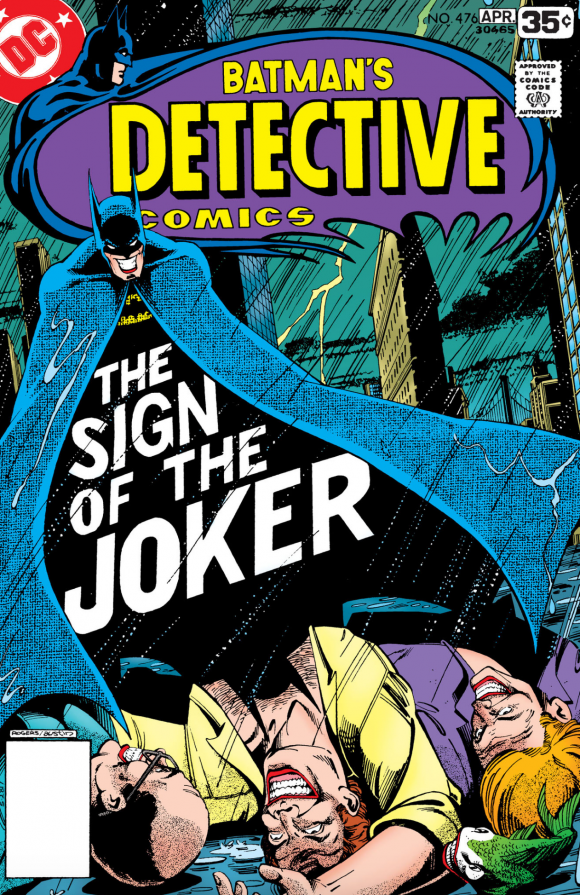
Marshall Rogers pencils, Terry Austin inks
—
NEXT — PART 1: DETECTIVE COMICS #469 — DR. PHOSPHORUS and the Rise of a BATMAN Classic. Click here.
—
MORE
— INSIDE THE BATMAN: THE STEVE ENGLEHART INTERVIEWS Complete INDEX. Click here.
— MARSHALL ROGERS: A Remembrance, by STEVE ENGLEHART. Click here.

June 20, 2020
Steve Englehart’s Detective Comics run IS the definitive Batman! When Marshall Rogers & Terry Austin were assigned, true Magic was created – no offense to Walt & Co.
June 20, 2020
Great interview from Mr. Englehart — he definitely understood how the Batman character worked.
June 20, 2020
The thing about Englehart’s Joker is that he was both crazy and funny. Englehart really understood the crazy part – something most writers don’t get. His Joker wasn’t out to kill people per se – he just wanted to sell his “Laughing Fish” and couldn’t understand why bureaucracy was trying to stop him.
June 20, 2020
I’m glad Steve mentioned his run on JLA. I’ve reread them several times since they were first published. Props to Dick Dillon, one of the hardest working illustrators in DC history.?
June 22, 2020
This is great! Truly THE definitive version of Batman and to get Englehart’s thoughts is like a master class. Really excited for the other parts- thanks Dan!
July 5, 2020
I didn’t care for Milgrom’s inks on Walt – to heavy-handed. Walt’s a tough penciller to ink correctly and only a few people seemed to do without swamping his pencils completely or awkwardly inking them which was the case with the first two Englehart issues. Terry would have been great on Walt.
September 25, 2020
This interview is phenomenal! Thank you for giving Mr. Englehart the space to share his behind-the-scenes story with us. What amazing insight!